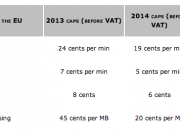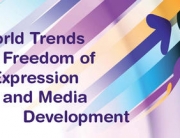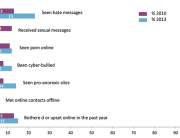Children’s perceptions of online risks and problematic situations may greatly differ from those of adults, with the line between positive and negative online experiences being very thin. This can lead to teenagers participating in risky pursuits, such as sharing sexual pictures with friends.
These are some of the conclusions of a new report from EU Kids Online, a research project based at the London School of Economics and Political Science (LSE) to mark Safer Internet Day (Tuesday 11 February).
The report, based on qualitative research coordinated by the Czech Republic (Masaryk University), paints a disturbing picture of how teenagers view the online risks related to posting sexual content online, with the majority of the male and female teenagers surveyed suggesting that it is up to the girls to take responsibility to avoid sexual pictures being shared.
The researchers held 57 focus groups and 113 personal interviews with children aged 9 to 16. In total, 349 participants from nine European countries were invited to explain what they perceive as problematic or harmful online, and what they do to prevent this from happening.
Researchers revealed that youth’s online problematic experiences are related almost to all contexts of their development, such as exploring their identity and sexuality, building relationships with peers or romantic relationships, but also to moral and ethics development.
Researcher Sofie Vandoninck, Catholic University of Leuven, said: “The teenage years are key times for young people to explore their identity and sexuality, and this, of course, filters into their online use. While parents, teachers or other adult caregivers may feel that exposure to certain online content or communication is risky, youngsters perceive this very differently. For example, posting sexual pictures and receiving flirty comments can be flattering and exciting. If these receive negative comments or are shared between too many people, however, this previously ‘positive’ experience can become traumatic.
Lead researcher David Smahel, Masaryk University, said: “The line between online positive and negative experiences is very thin. The outcome depends on the context of the situation and the children’s awareness of problems they may encounter on the internet. Even the same situation can be perceived differently by different children. While some children are very cautious about, for example, their personal information, others believe that nothing bad will happen to them, regardless of what they disclose online.”
As one boy said: “I have pictures on my Facebook profile, they are visible for everyone. I don’t post anything wrong, so I don’t really care.”(15-year-old boy, Belgium)
The researchers also found that teenagers do not consider limiting their online activities when unpleasant situations around sexual issues occur. Instead they tend to click away from the unpleasant webpage, or stated that those upset should not have gotten involved in the first place.
The research also reveals that most of problematic situations experienced by children and teenagers occur on social networking sites.
The majority of interviewed children expressed a range of concerns and online issues that sometimes bother them. Clearly, the worst risks in children’s eyes are online bullying and harassment, misuse of personal information, unwelcome or sexualized contact from strangers, but also commercial content. Looking at the media platforms where these incidents occur, about half of unpleasant online experiences happen on social networking sites such as Facebook. This shows that children acknowledge the potential risks of social networking sites, which does not necessarily mean they will do something to avoid the risk. Even if they are aware, some children simply do not care much about potential risks.
For the full report, Preventive measures – how youngsters avoid online risks by Sofie
Vandoninck, Leen d’Haenens & David Smahel see:
http://www.lse.ac.uk/media@lse/research/EUKidsOnline/EU%20Kids%20III/Reports/Pre
ventivemeasures.pdf





































